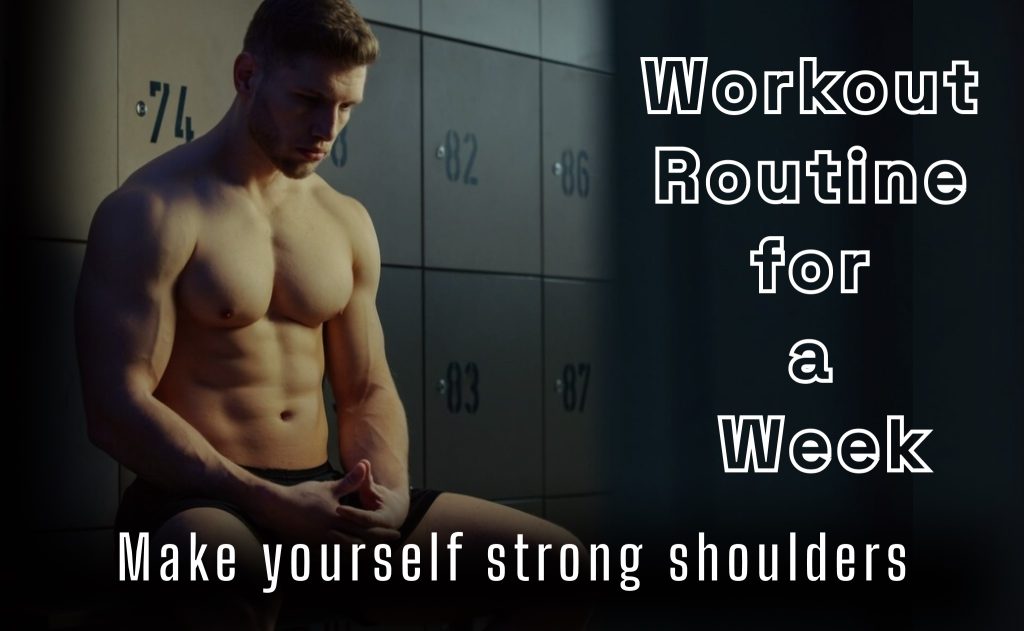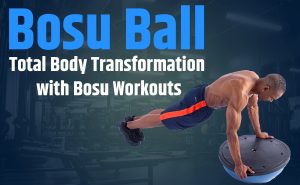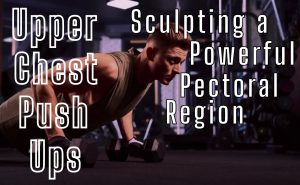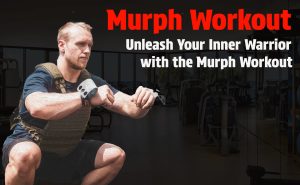When it comes to building strong shoulder muscles, it’s important to understand the anatomy of the shoulder. The shoulder is made up of several muscles, including the deltoids, which are responsible for the rounded shape of the shoulders. By incorporating bodyweight exercises like pike push-ups, handstand push-ups, and shoulder taps, you can specifically target these muscles and see significant progress over time.
Anatomy of the Shoulder Muscles
To understand how to effectively target your shoulder muscles during workouts, it’s important to have a basic understanding of the anatomy of the shoulder. By knowing which muscles come into play, you can tailor your exercises to maximize results.
Deltoids
The deltoids are the major muscles responsible for the rounded shape of the shoulders. They have three parts and each part plays a role in different movements of the shoulder.
- Anterior (front)
- Medial (middle)
- Posterior (rear)
Trapezius
The trapezius muscles are large muscles that extend down the back of the neck and upper spine. They play a crucial role in shoulder stabilization and help with shrugging and rotating the shoulder blades.
Rotator Cuff Muscles
The rotator cuff is a group of four muscles that work together to stabilize the shoulder joint. They play a vital role in preventing injury and ensuring proper shoulder movement.
- Supraspinatus
- Infraspinatus
- Teres Minor
- Subscapularis
Rhomboids
The rhomboids are muscles located between the shoulder blades. They help retract and stabilize the shoulder blades, allowing for better posture and shoulder movement.
Pectoralis Major
Although primarily a chest muscle, the pectoralis major also contributes to shoulder movements, especially during pushing exercises. It helps with horizontal adduction and internal rotation of the shoulder.
Top Calisthenics Shoulder Workout
When it comes to building strong and sculpted shoulders, you don’t always need weights or fancy equipment. Calisthenics, or bodyweight exercises, can be extremely effective in targeting and strengthening your shoulder muscles.
Pike Push-Ups
Pike push-ups are a challenging exercise that primarily targets your deltoids.
- Start in a push-up position but with your hips elevated, forming an inverted “V” shape
- Keep your hands slightly wider than shoulder-width apart
- Slowly lower your head towards the ground by bending your elbows
- Push back up to the starting position and repeat for the desired number of reps.
Shoulder Taps
Shoulder taps activate multiple muscles, including the deltoids, trapezius, and even core muscles.
- Start in a push-up position with your hands slightly wider than shoulder-width apart.
- Lift your right hand off the ground and tap your left shoulder.
- Return your right hand to the ground and repeat with your left hand tapping your right shoulder.
- Keep your core engaged and focus on maintaining a stable plank position throughout the exercise.
Bodyweight Rows
Bodyweight rows are an excellent exercise for targeting the rear delts while also engaging other muscles in your upper body.
- Find a sturdy horizontal bar at waist height and position yourself underneath it.
- Hold onto the bar with an overhand grip and extend your legs forward, keeping your body straight.
- Pull your chest toward the bar by squeezing your shoulder blades together.
- Lower yourself back down in a controlled manner and repeat.
Reverse Push-Ups
Reverse push-ups primarily target the rear delts and are a challenging exercise that can help you build bigger shoulders.
- Start by sitting on the ground with your legs extended and your hands placed behind you.
- Fingers pointing toward your feet.
- Lift your hips off the ground, supporting your weight with your arms and heels, and straighten your body.
- Lower yourself down by bending your elbows, keeping them tucked close to your sides, and then push back up.
Bodyweight Side-Lying “Lateral” Raises
This exercise can be done with just your body weight, making it accessible for anyone, regardless of their fitness level or access to equipment.
- Lie on your side with your legs extended and stacked on top of each other.
- Place one hand on the ground in front of you for support, and use your other hand to hold onto your top hip or thigh.
- From this position, lift your top arm up towards the ceiling, leading with your elbow and keeping your palm facing down.
- Make sure to maintain a slight bend in your elbow throughout the movement to engage the muscles effectively.
The Rear Delts: The Secret into Making your Shoulders Bigger
The rear delts, located at the back of the shoulder, play a vital role in sculpting and defining the overall appearance of your shoulders. While often overlooked, developing the rear delts is essential for achieving a balanced and aesthetically pleasing shoulder physique.
Building bigger rear delts using calisthenics exercises is attainable and can contribute to a well-rounded and aesthetically pleasing shoulder appearance. Incorporate bodyweight rows, reverse push-ups, and pike push-ups into your workouts to effectively engage and grow your rear delts.
Delt Workouts: You’re Missing a Crucial Part
Many people’s typical shoulder workouts tend to focus on the anterior and medial deltoids, neglecting the equally important rear delts. The result is often underdeveloped and imbalanced shoulder muscles, leading to poor aesthetics and a higher risk of injury.
Why the Rear Delts Are Often Overlooked
This is likely because most shoulder exercises involve pushing and pressing movements, which primarily target the front and side of the shoulders. Additionally, the rear delts are not visible from the front, making them less noticeable in an aesthetic sense.
Why You Need to Target the Rear Delts
Neglecting the rear delts in your workouts can lead to muscle imbalances, poor posture, and an increased risk of injuries. Strong and well-developed rear delts help to support the shoulder joint, improving stability and reducing the risk of rotator cuff injuries. Additionally, developing strong rear delts can help improve overall shoulder aesthetics, creating a balanced and well-defined physique.
Bodyweight Shoulder Exercises: Calisthenics Shoulder Workout Routine
When it comes to building strong and defined shoulders, having an effective workout routine is essential.
Structuring an Effective Shoulder Workout Routine: The Basics
First, you’ll want to focus on exercises that target all three deltoid muscle groups: the anterior, medial, and rear delts. This ensures a well-rounded and balanced shoulder development.
Second, you’ll want to choose exercises that challenge your muscles and allow for progressive overload. This means gradually increasing the difficulty or intensity of the exercises over time to stimulate muscle growth.
Exercise Selection for All Deltoid Muscle Groups
To target all deltoid muscle groups, your shoulder workout routine should include a variety of exercises.
- For the anterior delts, exercises like push-ups, pike push-ups, and shoulder taps are effective choices.
- For the medial delts, exercises like shoulders taps and lateral raises work well.
- Finally, to target the rear delts, exercises like bodyweight rows, reverse push-ups, and pike push-ups are recommended.
Gradually Increasing Difficulty for Progressive Overload
In a calisthenics shoulder workout routine, there are several ways to implement progressive overload.
- One method is to increase the number of repetitions you perform for each exercise over time.
- For example, you could start with 10 push-ups and gradually work your way up to 15 or 20 push-ups.
- Another method is to increase the difficulty of the exercises. This can be done by performing more challenging variations or by introducing advanced exercises into your routine.
- For pike push-ups, you can go to an insane hand stand push-ups.
Sample Workout Routine for a Week: Building Strong Shoulders

To effectively target your shoulder muscles, it’s important to have a structured workout routine. With calisthenics, you have the flexibility to customize your workouts based on your fitness level and goals. Rest in between sets should only last for 30 to 60 seconds.
Monday: Anterior and Medial Deltoids
Start your week by targeting your anterior and medial deltoids with push-ups and lateral raises.
- Push-ups (3 sets of 15 reps)
- Bodyweight Lateral Raises (3 sets of 15 reps)
- Shoulder Taps (3 sets of 15 reps)
Wednesday: Medial and Posterior Deltoids
On Wednesday, shift your focus to your medial and posterior deltoids.
- Pike Push-ups (3 sets of 15 reps)
- Bodyweight Rows (3 sets of 12-16 reps)
- Reverse Push-ups (3 sets of 15 reps)
Friday: Anterior and Posterior Deltoids
Finish your week by targeting your anterior and posterior deltoids
- Pike Push-ups (3 sets of 15 reps)
- Bodyweight Lateral Raises (3 sets of 15 reps)
- Reverse Push-ups (3 sets of 15 reps)
Making sure to hit a muscle two to three times a week will be crucial in its development. More muscle stress means more time to grow. That’s why I am a no fan of bro-splits.
Calisthenic Shoulder Workout: Progression Techniques for Advanced Bodybuilders
Progression is the often problem with calisthenics. How to progress with just using bodyweight? How to make things harder? For advanced bodybuilders looking to take their calisthenics shoulder workout routine to the next level, incorporating progression techniques can enhance muscle growth and increase strength.
- Tempo: By manipulating the tempo of your repetitions, you can increase time under tension, stimulating muscle growth and strength. Consider incorporating slow eccentrics, where you focus on controlled lowering movements, to intensify the workout.
- Resistance bands and weighted vests: These are excellent tools to add resistance and make exercises more challenging, thus promoting muscle growth and development.
- Range of Motion: Furthermore, adjusting your body’s leverage and range of motion can ramp up the difficulty of the exercises.
- Try decline push-ups to shift more weight onto your upper body and create extra stress on your shoulders.
- Additionally, explosive movements like plyometric push-ups or clap push-ups can enhance power and explosiveness in the shoulder muscles, making the workout more dynamic and engaging.
Implementing these progression techniques in your calisthenics shoulder workout routine can help advanced bodybuilders continually challenge their muscles, break plateaus, and achieve optimal results.
Nutritional Support for Bodyweight Shoulder Exercises
When it comes to optimizing your calisthenic shoulder workout, proper nutrition plays a crucial role in fueling your muscles and aiding in their recovery. To support your workouts, focus on consuming a well-balanced diet that includes all essential macronutrients.
- Protein, in particular, is essential for muscle repair and growth, so aim to include lean sources such as chicken, fish, tofu, or eggs in your meals.
- Healthy fats, found in foods like avocados, nuts, and olive oil, help reduce inflammation and support joint health, which is important for shoulder strength and mobility.
- Additionally, carbohydrates provide energy for your workouts, so choose whole grains, fruits, and vegetables as your carbohydrate sources to maintain steady energy levels throughout your training session.
- Staying hydrated is also key, so drink enough water throughout the day to support optimal muscle function and help prevent cramps.
- Consider timing your meals appropriately to optimize performance and recovery.
- Consuming a meal or snack containing protein and carbohydrates within an hour after your calisthenic shoulder workout can help replenish glycogen stores and aid in muscle recovery.
- Pre-workout, focus on consuming a carbohydrate-rich meal or snack about 1-3 hours before exercising to provide sustained energy during your session.
Don’t forget that listening to your body and adjusting your caloric intake based on your specific goals and needs is crucial for achieving desired results from your calisthenic shoulder workouts.
Time to Show your Shoulder Boulder
Incorporating bodyweight exercises into your shoulder workout routine can have a significant impact on the strength and aesthetics of your shoulders. By utilizing exercises such as handstand push-ups, pike push-ups, and reverse push-ups, you can effectively target and engage your shoulder muscles, promoting growth and definition.
These exercises not only provide a challenging workout but also offer the convenience of being performed anywhere, without the need for specialized equipment. In addition, the use of progression techniques like tempo manipulation, adding resistance, and incorporating weighted vests can further enhance the intensity and effectiveness of your shoulder workout.
Remember, consistency is key in achieving your desired results. Develop a routine that suits your fitness level and gradually progress by increasing the difficulty of exercises over time.




